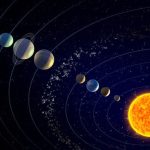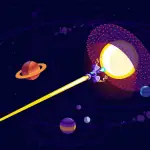Key takeaways
- NASA confirmed 301 new exoplanets, increasing the known total to over 4,800 distant planets.
- The ExoMiner tool, running on NASA’s Pleiades supercomputer, helped verify these new planets by efficiently analyzing vast amounts of data.
- The transit photometry method, observing star dimming caused by orbiting planets, remains the most common technique for discovering exoplanets.
- Other techniques include measuring a star’s wobble (radial velocity), light bending (microlensing), and direct imaging, though the latter is rare.
- Most of the newly identified exoplanets are gas giants or Neptune-sized, with only a small fraction being rocky like Earth.
NASA has verified hundreds of new exoplanets, dramatically increasing the number of distant planets we know about.
The overall number of new confirmed exoplanets is 301, representing a significant rise over the previous figure of 4,569 found by astronomers.
A computer software particularly intended to discover exoplanets, or worlds outside the solar system, is responsible for the rapid confirmation of so many of them.
When humans find what they believe to be an exoplanet, further research is required to establish its existence. The detected signal might represent a “false positive” in the data, rather than a new planet.
And there’s a lot of data. NASA spacecraft like as Kepler, which are designed to identify planets by gazing at stars, can have thousands of stars in their field of view at any given moment, according to NASA’s Jet Propulsion Laboratory (JPL).
Poring through each one’s data takes an enormous amount of time.
To tackle this, researchers employed ExoMiner, a tool that runs on NASA’s Pleiades supercomputer. The application can distinguish between planets and non-planets.
NASA scientists and numerous university academics have used ExoMiner to analyze data from an archive of probable but unconfirmed exoplanets. ExoMiner’s AI examination revealed the existence of 301 additional planets.
According to Hamed Valizadegan, the project lead and machine learning manager at NASA’s Ames Research Center in California, ExoMiner accurately identifies planets.Because of the biases inherent in human labeling, ExoMiner is highly accurate and, in certain cases, more dependable than both existing machine classifiers and the human experts it is intended to replicate.
ExoMiner’s finds were described in a paper approved for publication in the Astrophysical Journal.
Scientists can detect distant planets using a number of approaches. Nowadays, the most prevalent is transit photometry, often known as the transit method, in which astronomers use telescopes to look at stars and observe if they fade with time.
If they do, it indicates that a planet may be circling the star and momentarily obscuring part of its light when it passes in front of it.
Other techniques include radial velocity, which measures a star’s wobble caused by a planet passing around it; microlensing, which measures how much a star’s light is bent by the gravity of a nearby planet; and direct imaging, which takes a photo of the planet. Direct imaging is challenging, and just little more than 1% of exoplanets have been verified in this method.
JPL said that none of the newly identified planets are considered to be Earth-like. Indeed, the great majority of known exoplanets are either gas giants or gassy planets the size of Neptune.
A tiny fraction, however, are assumed to be rocky, like Earth is.


